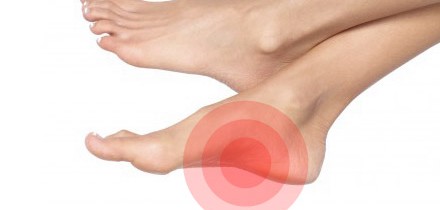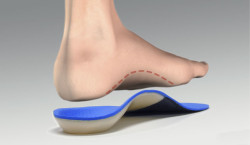How to get rid of heel pain forever
How to get rid of heel pain permanently.
Have you tried everything you can think of to get rid of heel pain? Have you tried physical therapy, medications, calf stretches, devices for heel pain you see in ads—all without long-term relief? Has a doctor injected steroids into your heel to treat your plantar fasciitis, heel spur or tendonitis? How much relief did that buy you? The truth is, there’s probably something you and your doctor are missing. That is the benefits of extracorpeal shockwave therapy for permanent relief from heel pain.
| What is Extracorporeal Shock Wave Therapy (ESWT)?
ESWT is a fast and gently non-surgical method of reducing heel pain. It is derived from lithotripsy, a technique used today to disintegrate kidney stones without the use of invasive surgery. The Stortz Medical Swiss device delivers pneumatically generated high-pressure shock waves that travel through the skin. Inflamed soft tissue and bone calcifications that receive these high-energy pulses will heal stronger without harm to the surrounding tissues. Electricity is not sent into the body. High-energy pulsations of ultrasonic waves stimulate the body’s natural self-healing process.
Who does this treatment benefit? ESWT is especially beneficial for patients that have chronic heel pain and have not had much success with traditional therapies such as medications, orthotics, injections or physiotherapy. If you suffer from plantar fasciitis, heel spur syndrome or Achilles tendonitis, you are a candidate for this treatment. Can anyone receive this treatment? Dr. Kaila will determine if you are a candidate for ESWT. It is reserved for special cases where other treatments did not provide adequate relief of pain. ESWT is a very safe treatment, however is not recommended for use of heel pain in children, pregnant women or people currently taking medications that inhibit blood clotting. Does this treatment involve surgery or medications? ESWT means that there is no surgery, no anesthesia, no injections and no medication. What is involved in the treatment? The procedure is performed in our office. After an evaluation of your medical history, Dr. Kaila will carry out a simple manual examination of the painful area. The trigger point, or sore area over the heel will be located and marked. Ultrasonic transmission gel is applied to the foot. The ESWT hand piece is then positioned to gently and extensively transmit shockwaves over the injured area. The feedback you provide helps to determine the fine positioning of the applicator and the measurement of the impulse frequency. Once you are comfortable at a low level, the energy is gradually increased over several minutes. How long does the treatment take? A typical session lasts about 10 minutes. You will require one session per week for three to five weeks. How soon can I expect results? Most patients will notice improvement after the first treatment, however, overall healing continues for 3 months after the last treatment. Success rates with this treatment is approximately >80%. Are there any side effects with ESWT? There are virtually no side effects with ESWT since no medication, surgery, injections, or anesthesia is involved. Some patients may experience a short period of slight tingling, warmth or numbness immediately after their treatment. What are the symptoms of heel pain? The most common cause of heel pain is plantar fasciitis. The main sign of plantar fasciitis is pain or stiffness on the bottom of the heel when first standing. The pain is often in the bottom inside edge of the heel, but can occur anywhere. The plantar fascia attaches to the heel. Patients often report that the pain moves around to different areas and can range from a dull ache to a debilitating sharp pain. The condition may come and go or be persistent for months to years. What are heel spurs? Long standing irritation can cause formation of calcium deposits at the point where the plantar fascia inserts into the heel bone. The result is the appearance of a heel spur on x- ray. The spur itself is not the cause of pain. The terms heel spur syndrome and plantar fasciitis are often used interchangeably in medicine, and the cause and treatment for the conditions are the same. |



